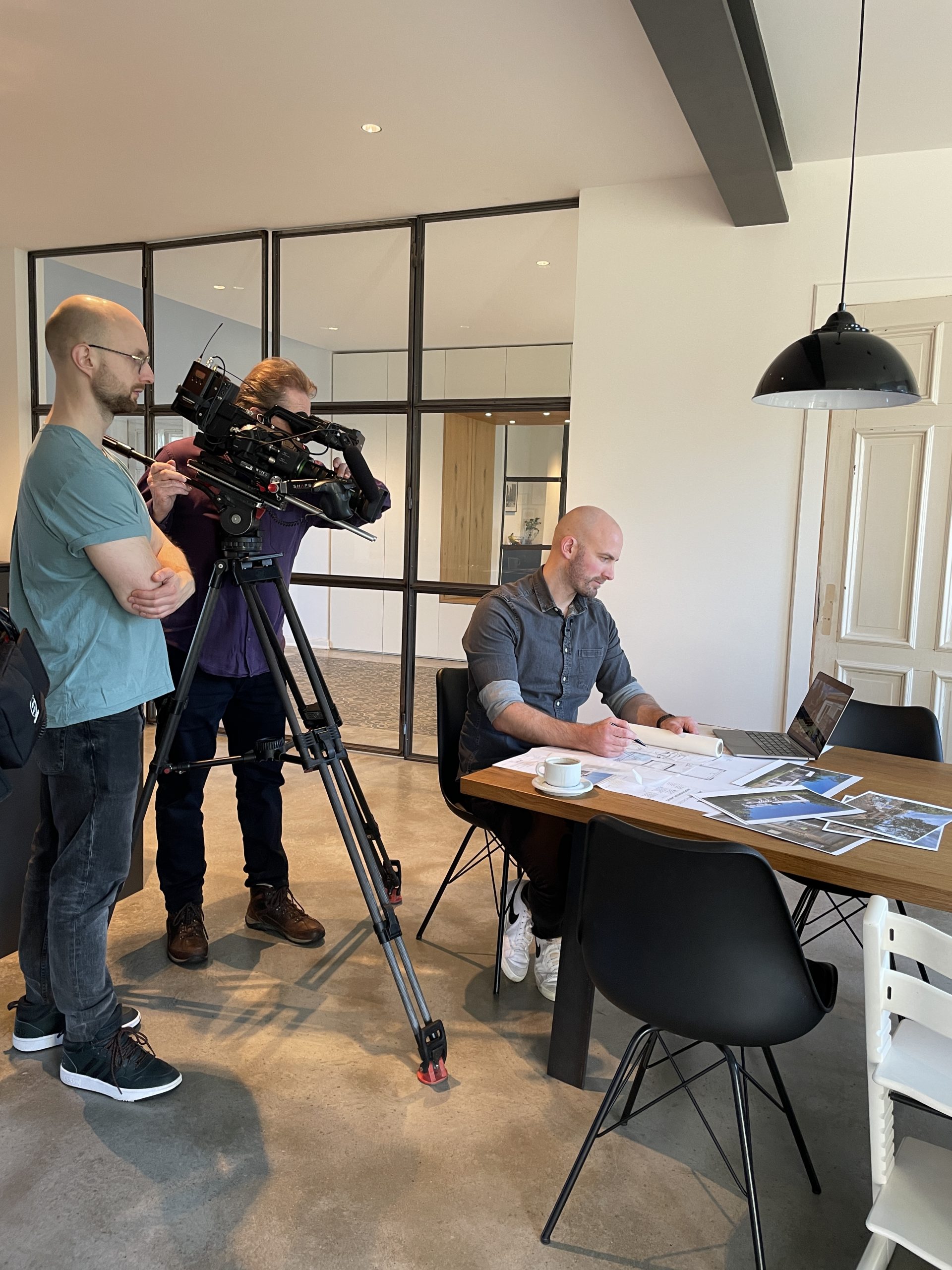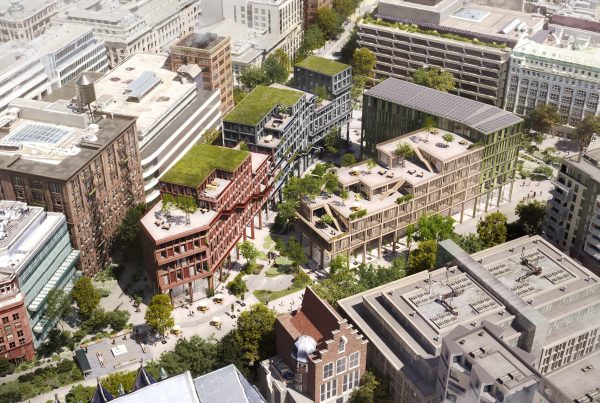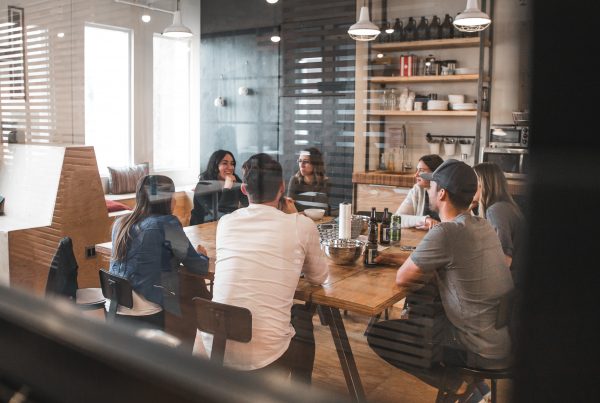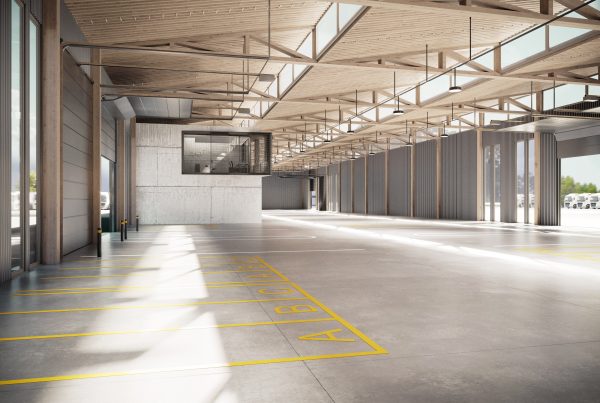Hamburg architect Justus Asselmeyer today in the NDR market on the subject of redevelopment
Hamburg architect Justus Asselmeyer was interviewed on the NDR Markt program about the architectural re-use and after-use of buildings.
 The statement he made in the NDR Markt TV report was clear: “We advocate the consistent redevelopment and reuse of buildings where possible. To value the existing and to live on – instead of building new!”
The statement he made in the NDR Markt TV report was clear: “We advocate the consistent redevelopment and reuse of buildings where possible. To value the existing and to live on – instead of building new!”
The term “grey energy” refers to the primary energy required to construct a building. This includes the energy needed to extract materials, manufacture and process building components, transport people, machines, components, and materials to the construction site, install components in the building, and dispose of them. It is therefore the invisible energy bundled in buildings that was used for construction, production, and transport. You can read more about this in the NDR Markt interview on TV.
Here are some interesting facts about construction:
- The living space per person has increased by 20% in the last 20 years.
On average, the living space per person increases by one square meter every five years. In 2020, the national average is about 45 m², whereas in 1995 it was 36 m² per person – one fifth less!
Source: DIE ZEIT - 11% of global CO2 emissions are generated in the production of building materials
(30% of all emissions for the construction of a building and the subsequent operation of a life cycle). - In a new building (such as KfW 55), the grey energy accounts for about 50% of the energy consumption in the life cycle (calculated over 50 years), whereas in conventional buildings, it accounts for about 30%.
- According to the climate protection plan, the energy supply will be switched to renewable energies by 2050. However, the share of grey emissions over the entire life cycle will still be no less than 80%.
Source: bauwende.de
One thing is certain:
According to all experts, 100-year-old buildings have a better overall energy balance than newly built passive houses! Through the use of locally sourced materials and resource-conserving construction methods, the “grey energy” used in the building can be minimized, but not completely eliminated.
ASSELMEYER ARCHITEKT is committed to sustainable identity architecture, with a focus on companies and brands. We place special emphasis on detailed identity and user analysis in order to build in a way that is energy and cost-efficient in the long term. We coin the term Identity Architecture.
In a TV segment on NDR Markt (aired on 13.02.2023), two projects were presented:
An old remnant farm at the gates of Hamburg:
The renovation of a main house of a remnant farm dating from 1914, which was completely preserved in its basic substance, including all masonry/clinker walls and the entire wooden supporting structure in the ceiling and roof. The property was completely gutted, and a completely new floor slab was inserted into the existing walls, and the building was renovated for energy efficiency.
he challenge was the statics, which could only be guaranteed by a construction process in two sections. While one half (divided lengthwise) was demolished and rebuilt, the second half remained in place until the first part could resume its complete structural function. The entire roof structure received visible steel supports in parts. The entire first-floor slab is heated at a low temperature via underfloor heating, and the living space is additionally kept comfortably warm in the winter months by a fireplace.
Detached house near Braunschweig
The rehabilitation of a bungalow from 1962, in which the basic substance was to be preserved. The property was completely gutted and energetically renovated and also an extension was added to create the required living space of 330m2 for the family.
The special challenge in this project was that the permitted lateral building limits were reached with the existing structure and the ceiling height in the basement was only 2.05 meters, which was in a non-permissible habitable range. The architectural solution: lowering a section of the basement by 100 centimeters, using elaborate WU reinforced concrete construction that resists groundwater and earth pressure on the unique lakefront property. By lowering one floor level and a 12 meter long, atrium, a completely new living floor was created – in the basement. On the first floor, the bungalow opens to the lake side through a large-format glass facade.
These two projects are a good example of the consistent renovation and reuse of buildings and the treatment of existing properties.
More info about the project.
The contribution can be seen in the NDR Mediathek:
https://www.ndr.de/fernsehen/sendungen/markt/Denkmalschutz-machtlos,markt16330.html
Info on the architectural firm and the concept of identity architecture at:
https://asselmeyerarchitekt.de/
Link to the company’s image film:
https://www.youtube.com/watch?v=T3uTRKCywpU
ASSELMEYER ARCHITEKT Hamburg
Lange Reihe 29
20099 Hamburg
+49 (0) 40 524 764 040
info@asselmeyerarchitekt.de
To see in the NDR market (Today / 13.02.2023)

